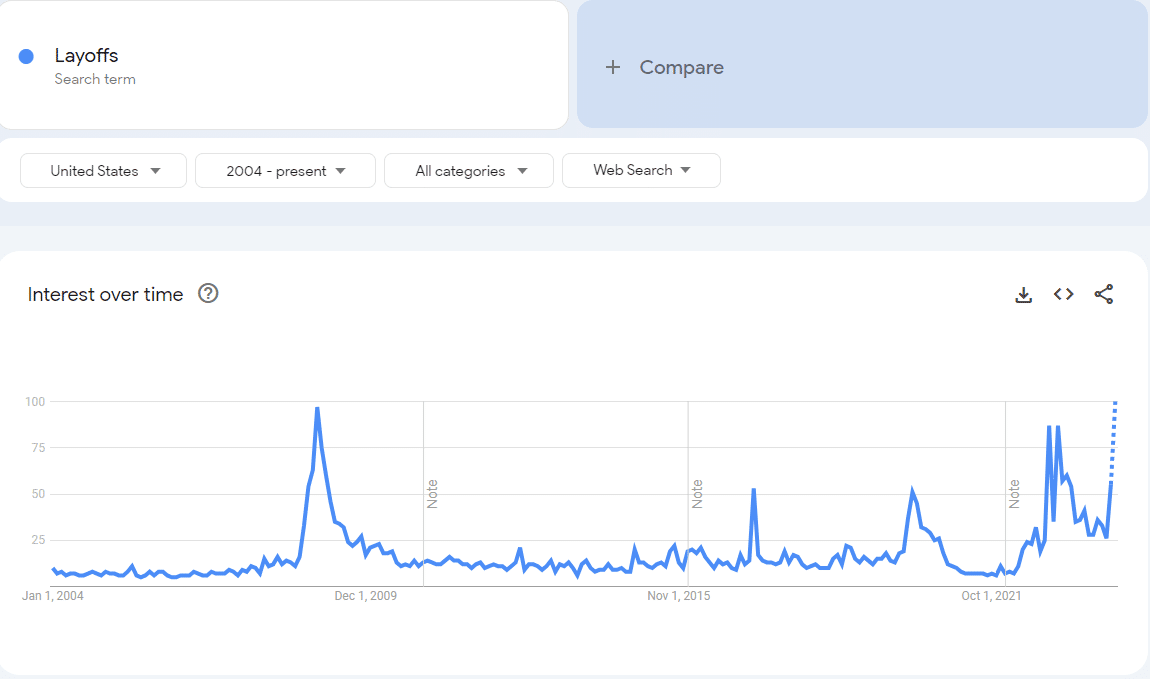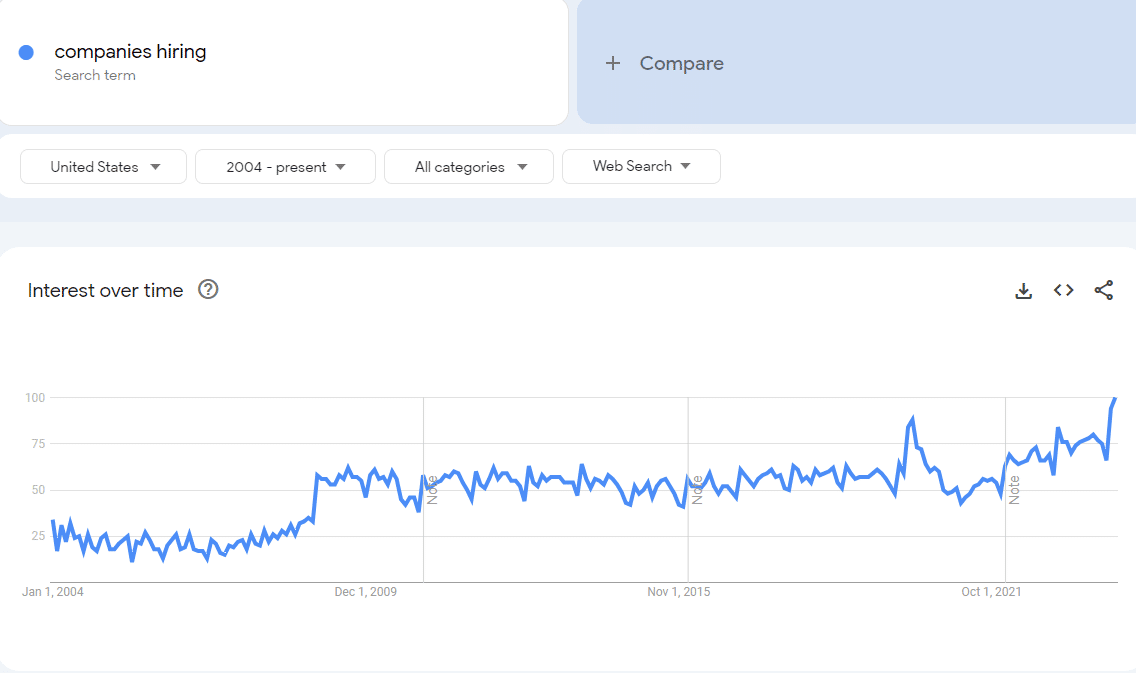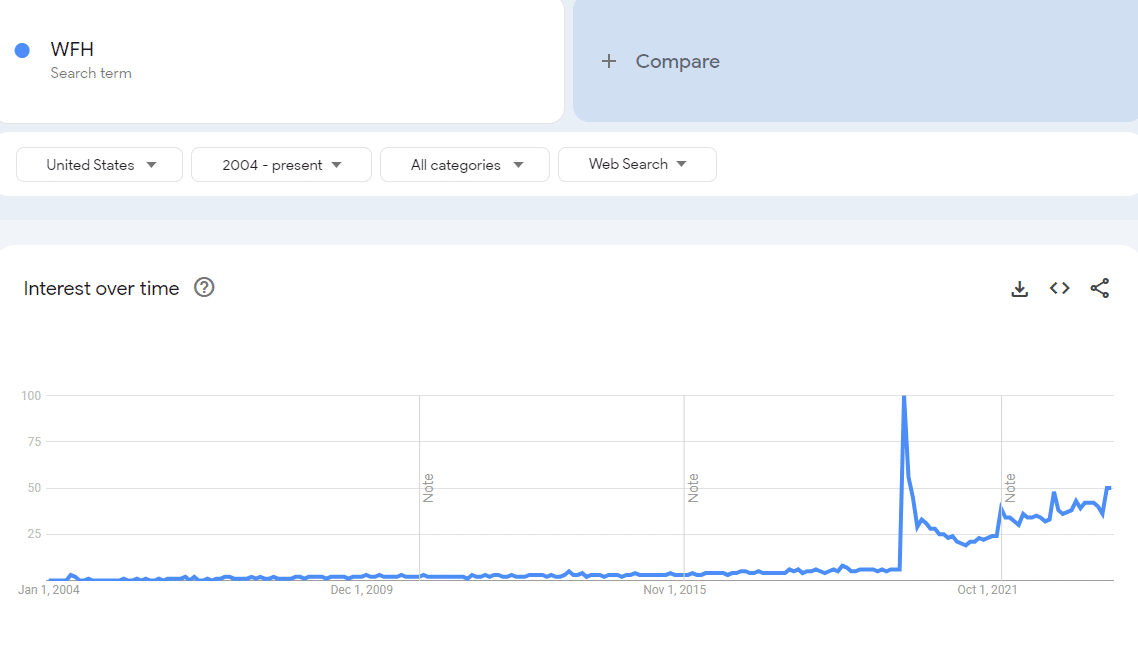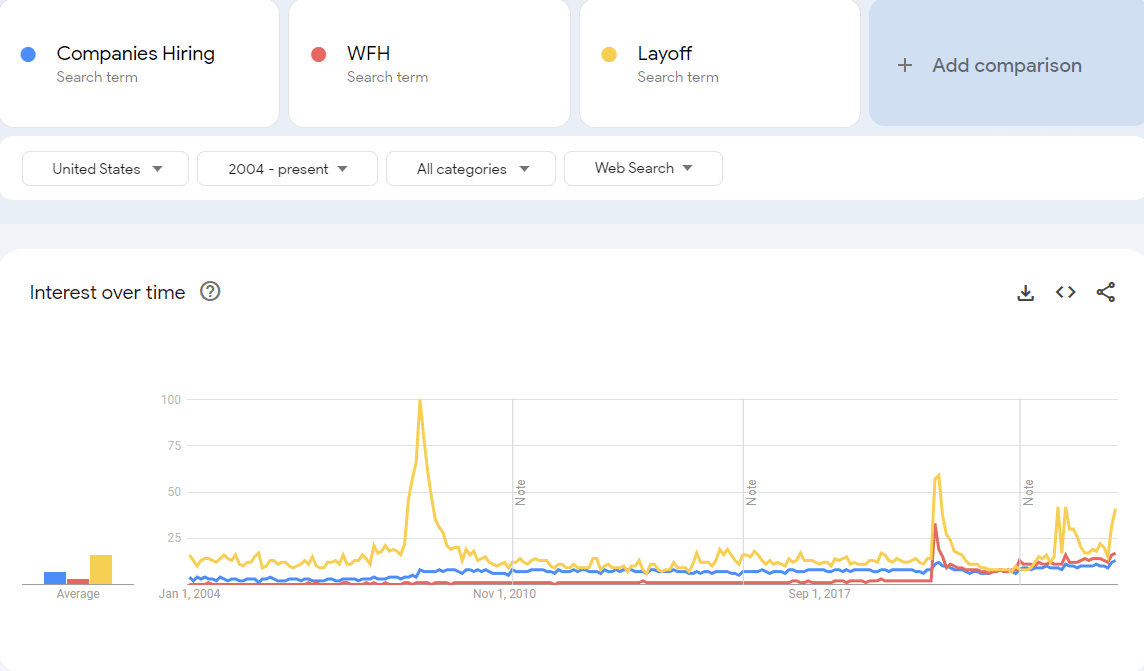Google Keyword Search Trend
Google Trends allows you to see the topics people are—or aren’t—following over a set period of time. In this blog, we will dive into the trends of the following keywords; Layoffs, WFH, and Companies Hiring. All data was collected by google from the timeframe 2004-Present.
Layoffs

The keyword “Layoffs” had a few peak moments in the last 20 years. First, you will see a massive spike during the 2008 recession. The next major spike comes in during 2020 right when the COVID pandemic hit. In the past 2 years “layoffs” has been at an all-time high for keyword searches with the trend predicting it to go higher than it has ever been in the past 20 years.
Companies Hiring

The keyword “Companies Hiring” follows a fairly similar trend that “Layoffs” has. First, there is a decent spike going into December of 2009, right after the recession in 2008. Next, there is an even bigger spike in 2020 during COVID-19. There is a slight dip shortly after the pandemic calmed down, and now, in the early months of 2024, “Companies Hiring” is at an all time, exactly how the trend in “Layoffs” is forecasted.
WFH

The keyword “WFH” skyrocketed in 2020, during the height of the COVID-19 pandemic. Since then, there was a slight dip in WFH searches. Many companies are now moving away from fully remote roles and introducing hybrid roles as a new standard. Remote jobs are still around, yes, but they are nowhere near as plentiful as they were in the height of COVID-19. There is a small uptick towards the end of the graph, with keywords “layoffs” and “companies hiring” following a similar trend, it looks like “WFH” may be closely related to the same path.
Comparison
As you can see from the comparison graph, the three(3) keywords selected follow a relatively similar path throughout the last 20 years. With all three(3) terms, rising in popularity towards the end of the graph, it will be interesting to see if the pattern continues like it has in history.
If you would like too change the keyword terms, dates or add comparisons, click the “Comparison” graph and you will be taken to Google Trends where you can test out different searches and try for yourself.


